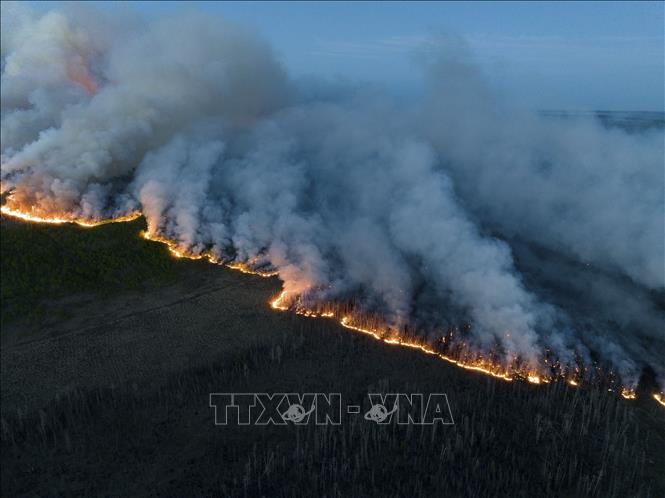
The largest area of damage caused by wildfires previously recorded in Canada was 7.3 million hectares in 1989.
According to the Canadian Interagency Forest Fire Centre (CIFFC), a total of 4,088 wildfires have broken out in the country so far this year, some of which have burned hundreds of thousands of hectares. Many of the fires are considered out of control due to their size and the large number of fires occurring at the same time.
Most of these fires broke out in forested areas far from residential areas, but still caused serious environmental consequences. Over 150,000 residents were displaced due to the impact of the fires.
Speaking to AFP, researcher Yan Boulanger of the Canadian Ministry of Natural Resources said that the wildfires have been continuing since early May, and the actual damage is much more severe than previously predicted. As of July 15, about 906 fires were still ongoing in provinces and cities across the country, of which about 570 were considered out of control.
The epicenter of the wildfires has also been shifting in recent months. In May, as Canada entered its dry season with a high risk of wildfires, the western Canadian province of Alberta became the epicenter of unprecedented wildfires.
A few weeks later, the mild province of Nova Scotia and Quebec City recorded massive fires with smoke blanketing them, even affecting parts of the neighboring United States. Since early July, wildfires have become more severe in British Columbia; in just three days, more than 250 fires have broken out, mostly caused by lightning strikes.
Most parts of Canada are facing severe drought, with months of below-average rainfall and high temperatures. Scientists say the country is warming faster than the rest of the planet due to its geography, as well as the effects of climate change, which is causing extreme weather events to become more frequent and intense.
Source link








































































































Comment (0)